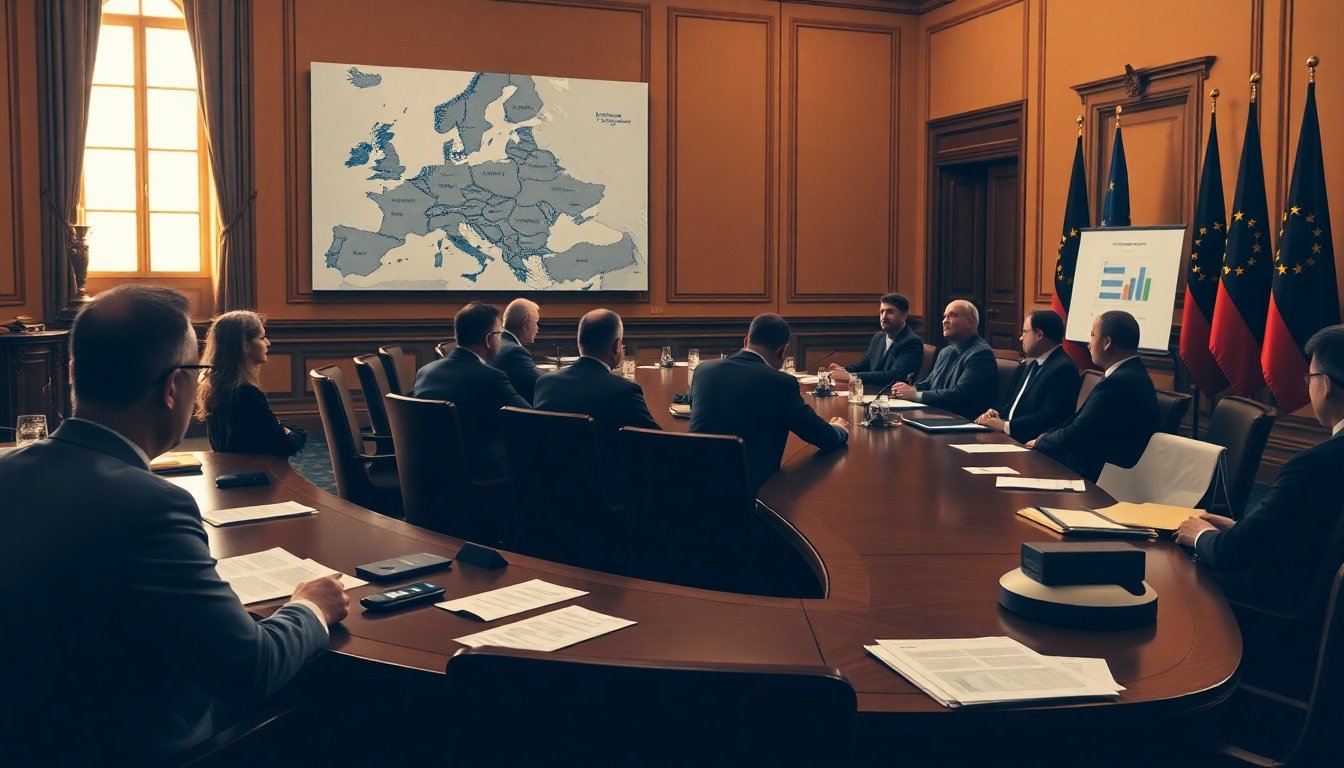Table of Contents
Donald Trump’s ceasefire proposal has sparked significant criticism among European officials. As negotiations progress and the situation in Ukraine grows more unstable, many diplomats express concerns that this plan could undermine support for Ukraine in its struggle against Russian aggression.
Concerns over the U.S. ceasefire proposal
European Union representatives are in ongoing discussions about using approximately €140 billion in frozen Russian assets, mainly held in Belgium, to strengthen Ukraine’s financial position. This funding is vital as Ukraine faces potential resource depletion in the coming months. However, Trump’s proposal to redirect these assets for U.S.-led reconstruction efforts has left many officials feeling frustrated and disheartened.
Implications for Ukraine’s sovereignty
Ukrainian President Volodymyr Zelenskyy has underscored the seriousness of the current situation, stating that Trump’s plan presents Ukraine with a critical choice: either compromise its national dignity or risk losing a crucial ally. This perspective resonates strongly within the European community. Senior EU officials have voiced concerns that this proposal, led by Trump’s envoy, Steve Witkoff, could undermine ongoing negotiations aimed at securing a reparations loan for Ukraine.
European leaders express frustration with U.S. strategy
Diplomats from various European Union nations have criticized the U.S. approach, particularly regarding the idea that Donald Trump could profit from assets intended to support Ukraine. An anonymous former French official described the Witkoff proposal as scandalous, highlighting the significant efforts Europe has made to find solutions that genuinely assist Ukrainians rather than exploit their situation.
Additionally, the legal complexities surrounding frozen assets further complicate negotiations. These assets, primarily held in Euroclear, a facility in Belgium, present a unique risk of retaliation from Russia, which could hinder any potential agreement. Despite these obstacles, the EU aims to utilize these funds to provide loans, which would only require repayment if Russia agrees to compensate Ukraine for damages caused by the war.
Belgium’s cautious stance
Belgium’s reluctance to support the proposed plan is driven by concerns over potential financial liability if Russia attempts to reclaim these assets. This cautious approach has led to friction with other EU members who are keen to accelerate aid for Ukraine. The emergence of Trump’s ceasefire proposal has intensified these tensions, raising fears among diplomats that it could further deter Belgium from engaging in the reparations loan initiative.
Reactions from the international community
As developments progress, the growing rift between U.S. and European strategies is becoming increasingly clear. The absence of dialogue with European leaders during the formulation of Trump’s ceasefire proposal has sparked feelings of exclusion and frustration among EU officials. Many perceive the U.S. plan as resembling a set of demands that favor Russian interests over those of Ukraine.
Kaja Kallas, the European Union’s top diplomat, has underscored the need for a peace plan that is supported by both Ukraine and its European partners. She emphasized that rewarding aggression would only lead to further hostilities. Any successful agreement must apply pressure on the aggressor, rather than the victim.
The urgency of coordinated efforts
As military hostilities continue and Ukraine faces external threats alongside internal challenges, including a corruption scandal involving President Zelenskyy’s administration, the call for a unified response intensifies. Reports suggest that U.S. officials have been in discussions with Russian representatives to revive stalled ceasefire negotiations. This development raises concerns in European capitals regarding the potential implications of such actions.
As European leaders unite to support Ukraine, they face the challenge of crafting a cohesive strategy that addresses the interests of all allies. The implications are significant, with potential effects extending beyond Ukraine and impacting the overall stability of the European region.


